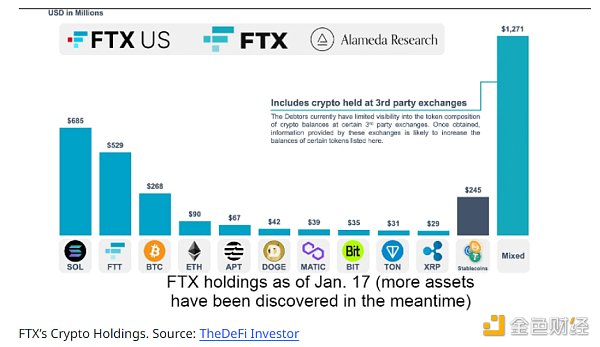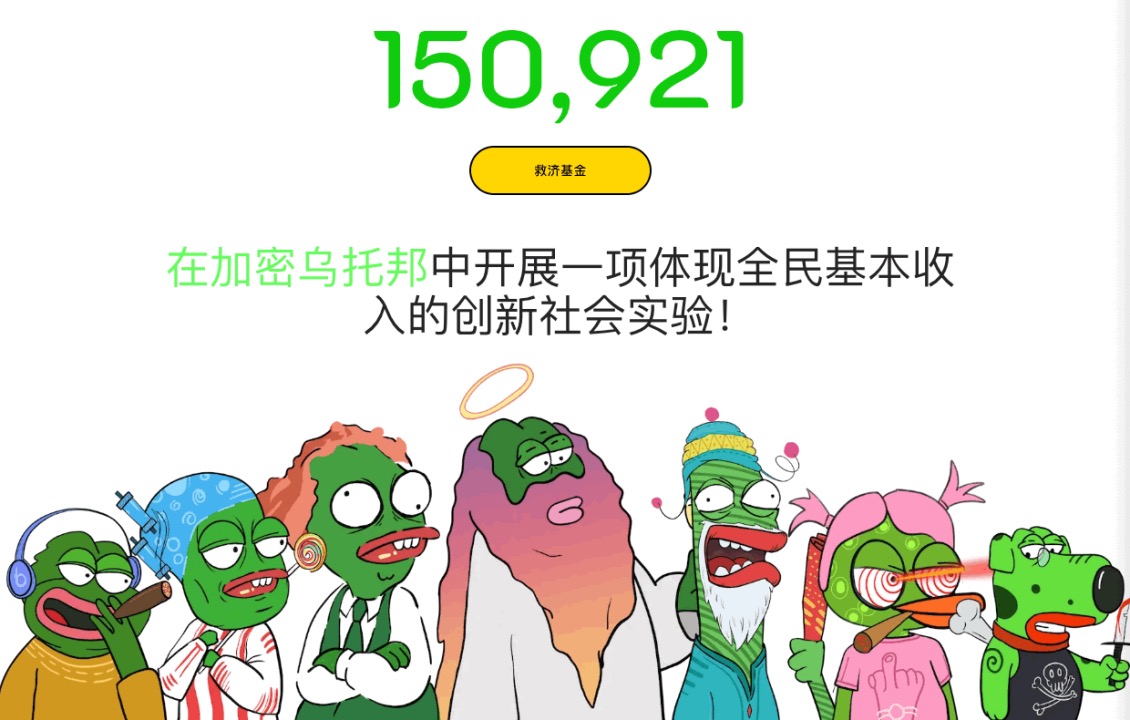Legal Research | Project Party White Paper Misrepresentation, How Investors Maintain Equity
Author: Chain Law Lawyers
Source: Chain Method
The white paper for the blockchain industry is the blueprint for the project and the development plan for the project. If a project's white paper is adjusted and upgraded with regulatory policies and market changes, investors are certainly willing to accept it. However, when the contents of the white paper involve false statements, and the contents of the tokens, dividends, locks, etc. are also changing, it is not just a question of not trusting. Regarding this issue, both institutional investors and individual investors have been suffering for a long time. What is the legal consequence of the project party’s false statement? How do investors maintain their rights and interests?
From the perspective of the development of the concept, the "book" originated from the specific report of a special issue by the government department. Usually, the report is not decorated at the time of printing, and the cover is also black and white, so it is called a white paper. Later, some social organizations also referred to reports on their understanding of reality or future aspects as white papers. White papers in the blockchain industry usually fall into this category, such as those published by companies such as Tencent, Jingdong, and Baidu. Blockchain White Paper, which often focuses on technology and its applications, and does not involve fundraising.
- Is the Ethereum futures contract really coming?
- Bitcoin’s block halving next year will reduce its weekly output by $63 million.
- Research Report | Libra, Central Bank Digital Currency, USDT, who will be the ultimate winner in the payment industry?
In addition to the above-mentioned types of white papers, there is another type of white paper for fundraising in the blockchain industry. This type of white paper will cover the details of fundraising in addition to the technology and its application. The book is very similar.
But the fundraising white paper is also significantly different from the prospectus:
On the one hand, the prospectus of a traditional enterprise usually appears in the fundraising process after the company has made certain performance, and the white paper in the blockchain industry is more used for fundraising during project planning and preparation;
On the other hand, according to the requirements of relevant securities regulations, the issuer of the prospectus usually has the obligation to make a truthful statement. For example, Article 17 of the Interim Regulations on the Administration of Stock Issuance and Transactions stipulates that all promoters or directors and lead underwriters should Sign the prospectus to ensure that the prospectus has no false, seriously misleading statements or major omissions, and that it is jointly and severally liable. As far as the blockchain industry white paper is concerned, there is no such provision.
Due to the above differences, many facts were in the expected state, unimplemented state, and unable to verify the authenticity when the white paper was released. The law has not clearly defined the legal responsibility of the white paper publisher's false statement, so the fundraising white paper is prone to false statements ( The content itself is not true or is frequently modified after the release) and causes disputes. We will briefly analyze the legal issues involved in these disputes.
O1 First of all, we believe that the white paper is usually an invitation to offer in contract law on the legal nature.
The first paragraph of Article 15 of the Contract Law stipulates: “The invitation to offer is an indication of the intention of others to make an offer to them. The price list, auction announcement, tender notice, prospectus, commercial advertisement, etc. are the invitation to offer.”
The legislative interpretation of the National People's Congress said: "The invitation to tender is in the preparation stage of the contract, and there is no legal binding." At the same time, the explanation is also called "the prospectus is an invitation to offer, but it is not a general invitation to make an invitation. It is a document of legal significance." It can be seen that the view that “the invitation to invite is not legally binding” is not absolute. Usually, after the invitation to offer, a new offer and promise will be generated. The meaning of the offer is covered. At this time, the invitation is not legal. Binding has its rationality.
The chain law team Pang Lipeng believes that in some cases, after the invitation to offer, the parties are in the “no written contract” (project investment in the blockchain industry, especially individual investors, there is no written agreement) Begin to fulfill the relevant payment obligations. At this time, the invitation to offer is an important reference for understanding and interpreting the true meaning of the parties, and should not deny its legal binding force. Therefore, some scholars believe that: “An invitation to offer a trading condition or a guarantee of trading conditions can constitute a legal act” (see: Yan Pengsheng, “On the Effectiveness and Containment Rules of Invitation to Offer”, in Political and Legal Forum, No. 1, 2004. , p. 87.)
O2 Second, false statements in the white paper may constitute contractual negligence and civil fraud.
Liu Lang, a chain law team, believes that although there may not be a written contract between the investor and the fundraiser who issued the white paper, after the investor pays the investment, it establishes a de facto investment contract relationship with the fundraiser.
At the same time, Article 42 of the Contract Law stipulates that if the parties deliberately conceal important facts related to the conclusion of the contract or provide false information or other acts contrary to the principle of good faith in the process of entering into the contract, they shall bear the losses caused to the other party. Liability for damages, such liability for damages is referred to as “the fault of contracting fault”.
On the other hand, based on the principle of good faith in civil law, anyone has an obligation not to infringe on the legitimate rights and interests of others through fraud. Those who violate this obligation constitute a civil tort and should bear tort liability. In practice, it is generally believed that the liability for negligence in contracting and the liability for tort are independent of each other, and there is a difference between the two.
For example, judging from the existing jurisprudence, the referee generally believes that the liability for negligence in contracting only protects the reliant interest and does not protect the inherent interest, while the tort liability protects the inherent interest and protects the reliant interest. Therefore, in the litigation involving white paper fraud, the specific choice of the basis of the claim needs to be judged according to the actual situation.
O3 Finally, through the white paper to fictional facts, conceal the truth, and defraud other people's money, it may also constitute fraud.
As mentioned earlier, false statements in the white paper may constitute civil fraud, and “the boundary between fraud and civil fraud can only be the boundary between fraud and civil fraud that does not constitute fraud” (see, Zhang Mingxi, Criminal Law (Fourth Edition), p. 896).
Civil fraud can constitute a criminal offence if the constituent elements are met.
For example, the previous hero chain project, in the white paper, claimed to develop a blockchain virtual digital currency project with the gaming industry as the gimmick, and issued a virtual digital currency hero coin HEC to lure a large number of digital currency holders to invest. The case was controlled by Hengyang City. The Public Security Bureau filed a case investigation on the grounds of fraud. It is reported that 21 suspects in the case were taken to take criminal detention measures. 15 people have been involved, and 9 of them have been arrested by the procuratorate.
In addition to the possibility of general fraud, the use of white papers to defraud money may also constitute other fraudulent crimes, such as fund-raising fraud and organization, leading pyramid schemes. The reason why the crime of organizing and leading MLM activities is classified as fraud is because some scholars believe that because the organization and leadership of MLM activities are only fraudulent means, the behavior itself is still fraud, so the crime of organizing the leadership of pyramid schemes is more reasonable. Fraud (see: Chen Xingliang, "The Crime of Organizing and Leading MLM Activities: Nature and Boundaries", in Political and Legal Forum, No. 2, 2016, p. 111).
Guo Yatao, a chain law team, believes that even if there is no false statement in the white paper, it may still be suspected of committing crimes by issuing white papers, because the financing of token issuance is suspected of undermining the national financial order. As announced by the People's Bank of China, the China Securities Regulatory Commission and other agencies, the "Announcement on Preventing the Risk of Subsidy Issuance Financing": Subvented issuance financing "essentially an unauthorised illegal public financing, suspected of illegally selling tokens Securities, illegal issuance of securities, and illegal fund-raising activities such as illegal fund-raising, financial fraud, and pyramid schemes.
It should be emphasized that, in view of the violation of the white paper by the project party, how investors maintain their rights and interests should be specifically analyzed from the specific content involved in the white paper, because some white papers will involve fundraising, currency, and payment consideration. Specific details, while others are not involved. How investors respond, should be specifically analyzed from the case to determine the specific legal program. In addition, because the project party violates the white paper statement, it may not only involve civil liability, but also may involve criminal liability. From this situation, the measures that investors can take are also diverse.
We will continue to update Blocking; if you have any questions or suggestions, please contact us!
Was this article helpful?
93 out of 132 found this helpful
Related articles
- Getting started with blockchain | What is the difference between cryptocurrency investment and speculation? How to make both fish and bear's paw
- Web3.0 Macro-Logical Thinking: From Technical Illustrations to Business Paradigms
- Stirring the global central bank, the legal digital currency behind the "squid" Libra
- Ethereum in-depth comment: new address number forecast price trend valuation is afraid of historical low
- Exclusive Interpretation | Tencent Blockchain White Paper on Libra, Face Up or Downward Strike?
- Academic Direction | How does Bitcoin drive breakthrough innovation in accounting?
- Viewpoint | Blockchain is a digital social governance system for AI smart new species





